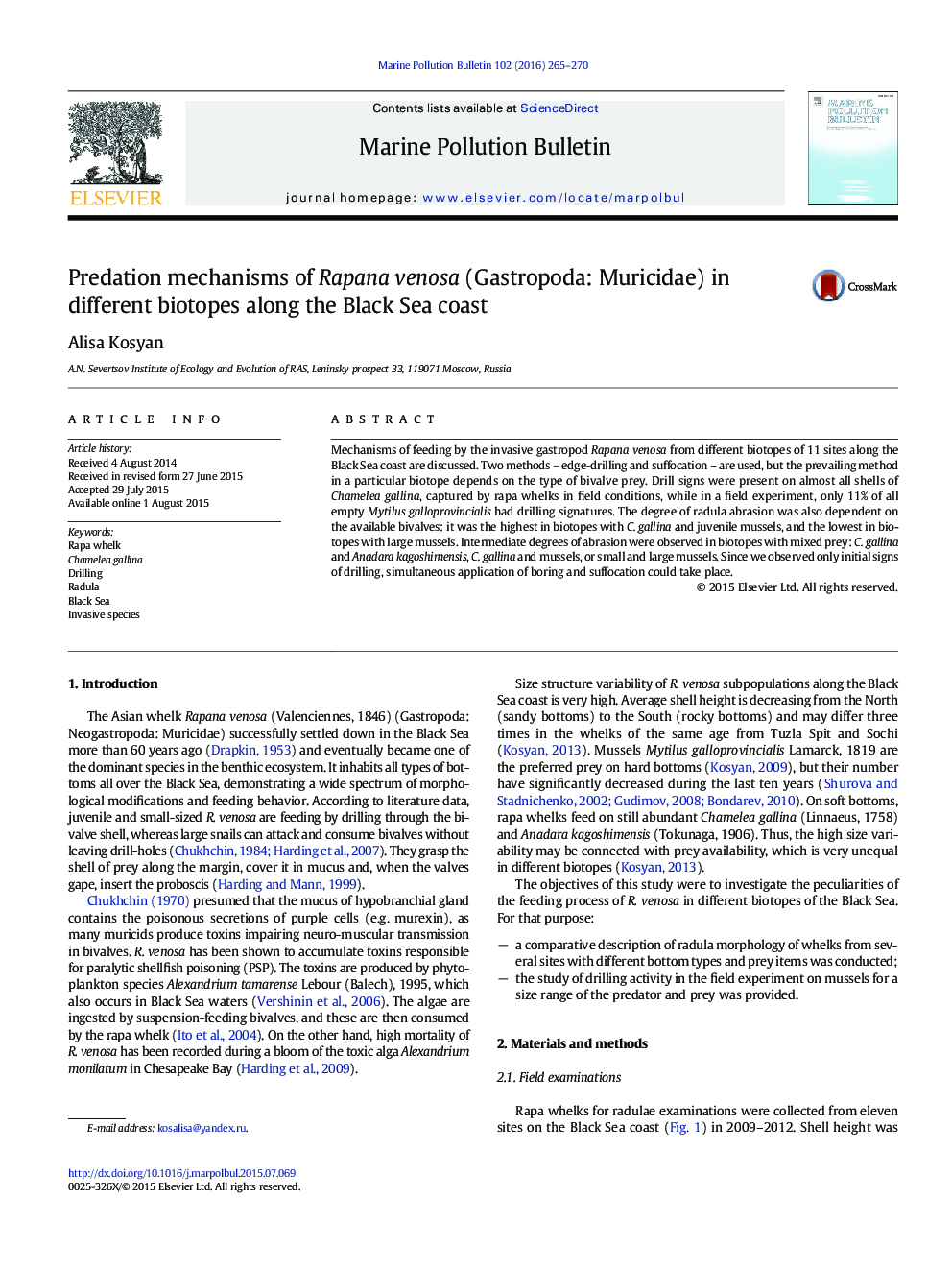| Article ID | Journal | Published Year | Pages | File Type |
|---|---|---|---|---|
| 4476571 | Marine Pollution Bulletin | 2016 | 6 Pages |
•Black Sea rapa whelks use drilling, suffocation and both of these predation methods.•The method of attack depends on the available bivalve prey in a particular biotope.•R. venosa shell height, radula size, age or localities do not affect the predation type.•C. gallina and small mussels are consumed using combined drilling and suffocation.•Large mussels are consumed by suffocation, i.e. opening the valves by the foot.
Mechanisms of feeding by the invasive gastropod Rapana venosa from different biotopes of 11 sites along the Black Sea coast are discussed. Two methods – edge-drilling and suffocation – are used, but the prevailing method in a particular biotope depends on the type of bivalve prey. Drill signs were present on almost all shells of Chamelea gallina, captured by rapa whelks in field conditions, while in a field experiment, only 11% of all empty Mytilus galloprovincialis had drilling signatures. The degree of radula abrasion was also dependent on the available bivalves: it was the highest in biotopes with C. gallina and juvenile mussels, and the lowest in biotopes with large mussels. Intermediate degrees of abrasion were observed in biotopes with mixed prey: C. gallina and Anadara kagoshimensis, C. gallina and mussels, or small and large mussels. Since we observed only initial signs of drilling, simultaneous application of boring and suffocation could take place.
